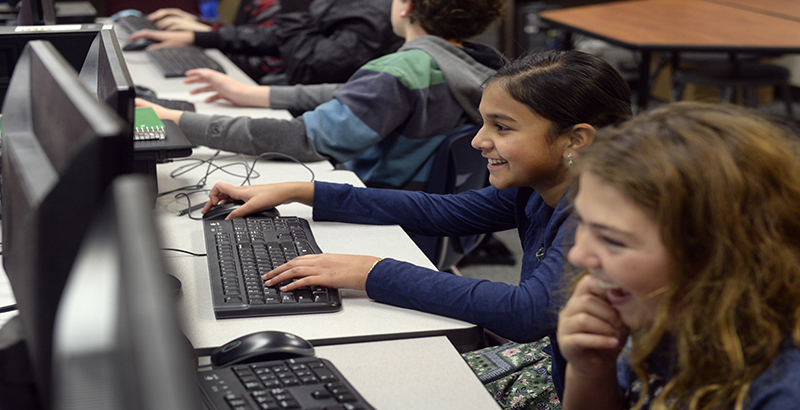Commentary: Ed Tech Does Help Close the Achievement Gap — When It Supports Teachers

According to popular theory, Chromebooks, iPads, and other technology will revolutionize classroom learning, and students will need much more of it in order to be prepared for the 21st century economy.
There’s no doubt that education technology can make a big difference in the classroom. But the facts show that the key to closing the achievement gap is not providing more technology to students, but rather putting the right ed tech into the hands of teachers.
One frequently touted benefit of digital tools, for instance, is that they are self-pacing, allowing students to progress on their own through individualized learning programs. However, a meta-analysis by Duke University researchers of 23 studies examining the efficacy of intelligent tutoring systems showed that self-paced education technology may actually exacerbate achievement gaps by allowing already high-performing students to progress while leaving underperforming students to flounder.
A better way to improve outcomes and close the achievement gap is to give teachers effective digital tools that are purposefully designed to improve instruction and empower teachers to better focus their time and resources.
These kinds of tools exist today. For example, colleagues and I developed an online learning platform some 15 years ago, now offered as a free public service, that gives teachers a dashboard that shows where each student is excelling or falling behind. Using traditional textbooks and nightly math homework, this technology also gives students feedback while they’re working so they don’t repeat errors all night long, and it sends teachers a nightly homework report. A teacher can tell, for instance, that 25 percent of her students got the second question on their assignment wrong, and then take action by crafting a focused classroom review — without shy students having to raise their hands and admit confusion.
This teacher-empowering approach shows results. SRI International, an independent research firm, conducted a two-year randomized controlled trial of our tool among seventh-graders in Maine. End-of-year standardized tests revealed an 80 percent increase over anticipated performance, but even more impressive, students who were below the median on the previous year’s state math test gained the equivalent of over two years of learning in a single year. These results show that such tools can be very effective in closing persistent achievement gaps, succeeding where, in the past, software was shown to exacerbate them.
Interestingly, the state of Maine has been providing laptops to all middle school students for more than a decade. But until recently, the state had seen only trivial effects on test scores, showing that not every ed tech intervention pays off.
In the race to get devices and software into students’ hands, ed tech evangelists have neglected the role of the teacher. If the goal is enabling all students to learn, the teacher is the best person in the classroom to take advantage of digital tools. A teacher-focused approach can both amplify the impact of ed tech and be socially empowering, giving both teachers and students a richer sense of agency.
To be clear, ed tech does belong in classrooms, and in order for teachers to collect good data and be great instructors, students need good digital tools. And, yes, that means students should have access to, for example, Chromebooks and iPads.
But in the big picture, our nation needs to place far more weight on giving teachers intelligent technology created precisely to foster student learning. If we really want to move the needle on closing achievement gaps, we need to focus on helping teachers do their jobs with the best tools and to the best of their abilities. That’s what’s going to ultimately boost student outcomes.
Neil T. Heffernan is a professor of computer science and director of the Learning Sciences and Technologies Program at Worcester Polytechnic Institute. He is the developer of ASSISTments, a free web-hosted digital platform that provides teachers with specific insight into their students’ progress on math homework.
Get stories like these delivered straight to your inbox. Sign up for The 74 Newsletter

;)